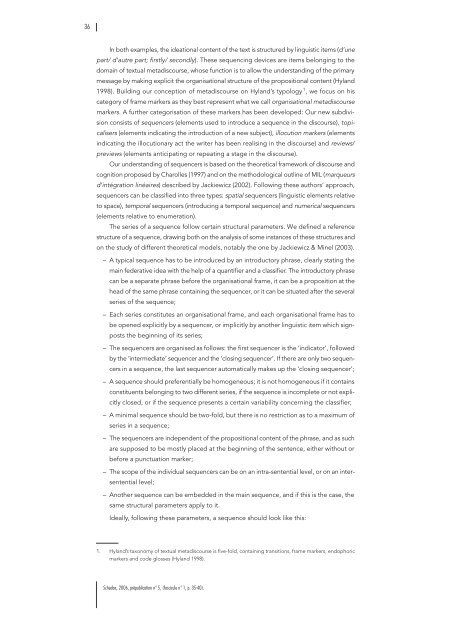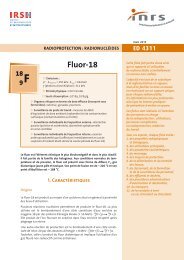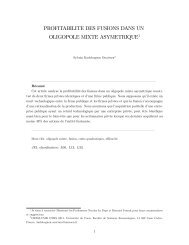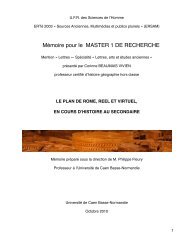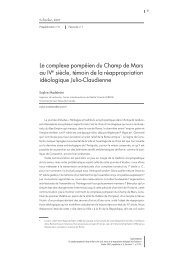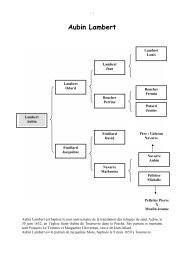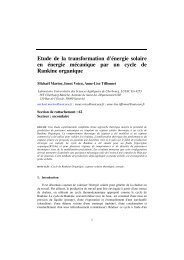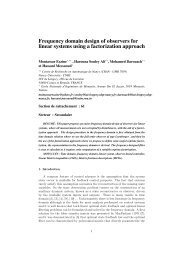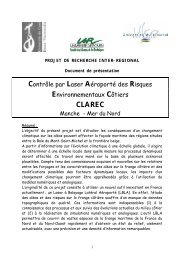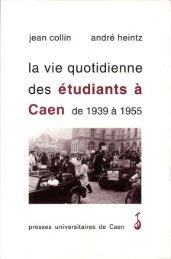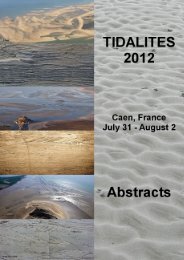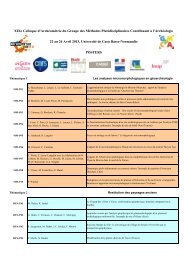The use of sequencers in academic writing - Université de Caen ...
The use of sequencers in academic writing - Université de Caen ...
The use of sequencers in academic writing - Université de Caen ...
You also want an ePaper? Increase the reach of your titles
YUMPU automatically turns print PDFs into web optimized ePapers that Google loves.
36<br />
In both examples, the i<strong>de</strong>ational content <strong>of</strong> the text is structured by l<strong>in</strong>guistic items (d’une<br />
part/ d’autre part; firstly/ secondly). <strong>The</strong>se sequenc<strong>in</strong>g <strong>de</strong>vices are items belong<strong>in</strong>g to the<br />
doma<strong>in</strong> <strong>of</strong> textual metadiscourse, whose function is to allow the un<strong>de</strong>rstand<strong>in</strong>g <strong>of</strong> the primary<br />
message by mak<strong>in</strong>g explicit the organisational structure <strong>of</strong> the propositional content (Hyland<br />
1998). Build<strong>in</strong>g our conception <strong>of</strong> metadiscourse on Hyland’s typology 1 , we focus on his<br />
category <strong>of</strong> frame markers as they best represent what we call organisational metadiscourse<br />
markers. A further categorisation <strong>of</strong> these markers has been <strong>de</strong>veloped: Our new subdivision<br />
consists <strong>of</strong> <strong>sequencers</strong> (elements <strong>use</strong>d to <strong>in</strong>troduce a sequence <strong>in</strong> the discourse), topicalisers<br />
(elements <strong>in</strong>dicat<strong>in</strong>g the <strong>in</strong>troduction <strong>of</strong> a new subject), illocution markers (elements<br />
<strong>in</strong>dicat<strong>in</strong>g the illocutionary act the writer has been realis<strong>in</strong>g <strong>in</strong> the discourse) and reviews/<br />
previews (elements anticipat<strong>in</strong>g or repeat<strong>in</strong>g a stage <strong>in</strong> the discourse).<br />
Our un<strong>de</strong>rstand<strong>in</strong>g <strong>of</strong> <strong>sequencers</strong> is based on the theoretical framework <strong>of</strong> discourse and<br />
cognition proposed by Charolles (1997) and on the methodological outl<strong>in</strong>e <strong>of</strong> MIL (marqueurs<br />
d’<strong>in</strong>tégration l<strong>in</strong>éaires) <strong>de</strong>scribed by Jackiewicz (2002). Follow<strong>in</strong>g these authors’ approach,<br />
<strong>sequencers</strong> can be classified <strong>in</strong>to three types: spatial <strong>sequencers</strong> (l<strong>in</strong>guistic elements relative<br />
to space), temporal <strong>sequencers</strong> (<strong>in</strong>troduc<strong>in</strong>g a temporal sequence) and numerical <strong>sequencers</strong><br />
(elements relative to enumeration).<br />
<strong>The</strong> series <strong>of</strong> a sequence follow certa<strong>in</strong> structural parameters. We <strong>de</strong>f<strong>in</strong>ed a reference<br />
structure <strong>of</strong> a sequence, draw<strong>in</strong>g both on the analysis <strong>of</strong> some <strong>in</strong>stances <strong>of</strong> these structures and<br />
on the study <strong>of</strong> different theoretical mo<strong>de</strong>ls, notably the one by Jackiewicz & M<strong>in</strong>el (2003).<br />
– A typical sequence has to be <strong>in</strong>troduced by an <strong>in</strong>troductory phrase, clearly stat<strong>in</strong>g the<br />
ma<strong>in</strong> fe<strong>de</strong>rative i<strong>de</strong>a with the help <strong>of</strong> a quantifier and a classifier. <strong>The</strong> <strong>in</strong>troductory phrase<br />
can be a separate phrase before the organisational frame, it can be a proposition at the<br />
head <strong>of</strong> the same phrase conta<strong>in</strong><strong>in</strong>g the sequencer, or it can be situated after the several<br />
series <strong>of</strong> the sequence;<br />
– Each series constitutes an organisational frame, and each organisational frame has to<br />
be opened explicitly by a sequencer, or implicitly by another l<strong>in</strong>guistic item which signposts<br />
the beg<strong>in</strong>n<strong>in</strong>g <strong>of</strong> its series;<br />
– <strong>The</strong> <strong>sequencers</strong> are organised as follows: the first sequencer is the ‘<strong>in</strong>dicator’, followed<br />
by the ‘<strong>in</strong>termediate’ sequencer and the ‘clos<strong>in</strong>g sequencer’. If there are only two <strong>sequencers</strong><br />
<strong>in</strong> a sequence, the last sequencer automatically makes up the ‘clos<strong>in</strong>g sequencer’;<br />
– A sequence should preferentially be homogeneous; it is not homogeneous if it conta<strong>in</strong>s<br />
constituents belong<strong>in</strong>g to two different series, if the sequence is <strong>in</strong>complete or not explicitly<br />
closed, or if the sequence presents a certa<strong>in</strong> variability concern<strong>in</strong>g the classifier;<br />
– A m<strong>in</strong>imal sequence should be two-fold, but there is no restriction as to a maximum <strong>of</strong><br />
series <strong>in</strong> a sequence;<br />
– <strong>The</strong> <strong>sequencers</strong> are <strong>in</strong><strong>de</strong>pen<strong>de</strong>nt <strong>of</strong> the propositional content <strong>of</strong> the phrase, and as such<br />
are supposed to be mostly placed at the beg<strong>in</strong>n<strong>in</strong>g <strong>of</strong> the sentence, either without or<br />
before a punctuation marker;<br />
– <strong>The</strong> scope <strong>of</strong> the <strong>in</strong>dividual <strong>sequencers</strong> can be on an <strong>in</strong>tra-sentential level, or on an <strong>in</strong>tersentential<br />
level;<br />
– Another sequence can be embed<strong>de</strong>d <strong>in</strong> the ma<strong>in</strong> sequence, and if this is the case, the<br />
same structural parameters apply to it.<br />
I<strong>de</strong>ally, follow<strong>in</strong>g these parameters, a sequence should look like this:<br />
1. Hyland’s taxonomy <strong>of</strong> textual metadiscourse is five-fold, conta<strong>in</strong><strong>in</strong>g transitions, frame markers, endophoric<br />
markers and co<strong>de</strong> glosses (Hyland 1998).<br />
Schedae, 2006, prépublication n°5, (fascicule n°1, p. 35-40).


